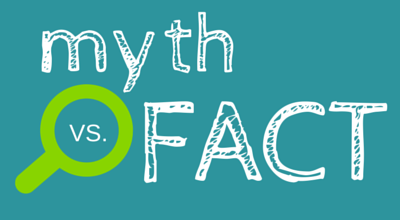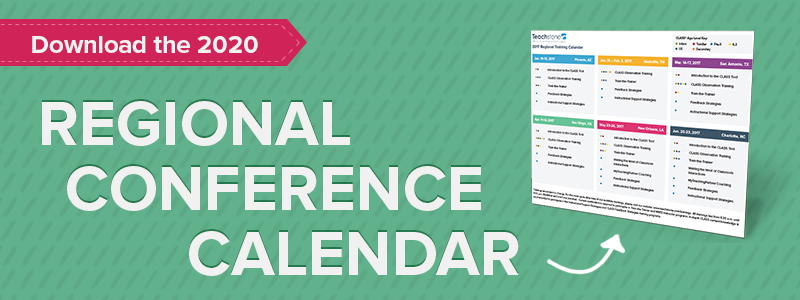
Your trainees arrive to CLASS Observation Trainings with different backgrounds, perspectives, and biases. They may also come with some misunderstandings about the tool. Confusion before CLASS Observation Training is understandable- after all, they don't know the tool yet, and they're probably afraid of that infamous reliability test. It's important for trainers to be aware of common misconceptions and to respond in ways that actually result in deepening trainees' understanding of CLASS. Here are 6 of the most popular CLASS myths and ways you can respond to them:
Myth #6: CLASS Observations equal teacher improvement.
Collecting observation data is critical, but it’s only one piece of the puzzle!
Data collection only yields numbers—and numbers, alone, don’t yield improvement. If the goal of CLASS is to improve outcomes for children, then CLASS observation data must be coupled with coaching and professional development. Effective teachers are the key ingredients in successful classrooms, and those teachers must be supported through individualized efforts built on observation data.
Myth #5: The CLASS tool is just for preschool.
Not true! The CLASS tool is not just for preschool, anyway. It is validated for six age levels ranging from infant all the way up to secondary—and trainings are available for you to become certified on all of them!
Myth #4: Reliable CLASS observers must have teaching experience.
Nope. At first glance, this assumption makes sense: someone observing classrooms should understand what goes on in classrooms. However, because the CLASS tool is an objective measure, the most critical requirement for any observer is the ability to put past experiences and biases aside—using only one’s objective notes and the CLASS manual to determine scores. Believe it or not, sometimes the most reliable observers are the ones who arrive to observation training with no education background!
Myth #3: Some aspects of the CLASS tool, like prompting children to analyze, demand unrealistic expectations of four-year-olds.
Not true! Young children are naturally thinkers, explorers, and scientists. Let’s give them the credit—and opportunities to think—that they deserve. Still not convinced? Then ask yourself this: How many times have you heard a child ask, “Why?” If you have ever spent time with a young child, then you know this question all too well. When children ask big questions, it stems from genuine curiosity and an urge to explore and think deeply about the world around them. The CLASS tool simply gives teachers strategies to stimulate and facilitate this kind of thinking
Myth #2: Scoring a 7 is perfect. How can we expect perfection from teachers?
When a teacher receives a score of 7 on any dimension of the CLASS tool, it’s fantastic, but not necessarily perfect. Why? Because perfection doesn’t exist! Here’s an example: Mrs. Washington has warm relationships with children, smiles often, offers verbal affection, and shows respect. Every indicator of this dimension fits the high range and she scores a 7 on Positive Climate. Although the observer noticed a lack of social conversation during the observation, that’s okay, because classrooms don’t have to be perfect for a score of 7—and even the best of us can find room for improvement.
Myth #1: The CLASS measure is a checklist.
If measuring the quality of human interactions was as simple as completing a checklist, the world would be a much different place. It would mean interactions are simple. It might even mean an end to political strife and global conflict! But, alas, interactions are complex. It’s pretty darn amazing to have a validated tool that can measure teacher-child interactions; but make no mistake, the CLASS measure is complex—and needs to be, in order to accurately capture the depth, duration, and frequency of teacher-child interactions.
Have you heard any other CLASS myths from your trainees? Please share what you've heard and how you responded with your fellow trainers.

